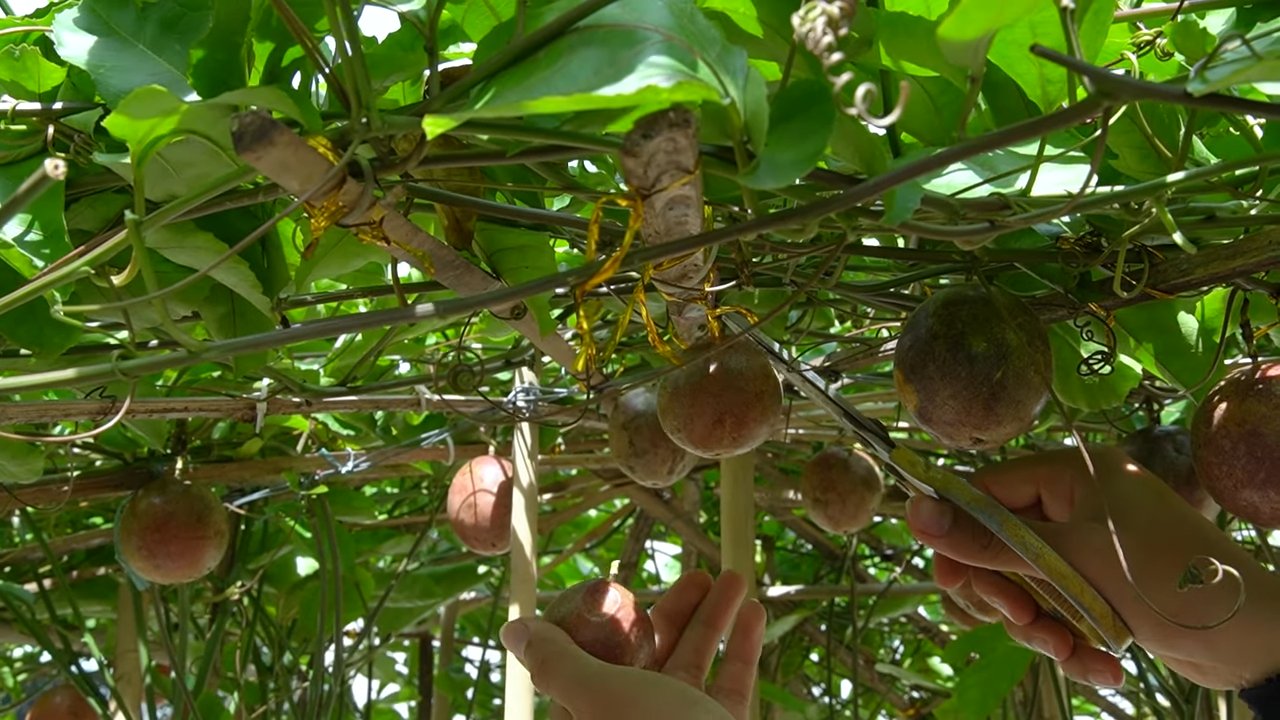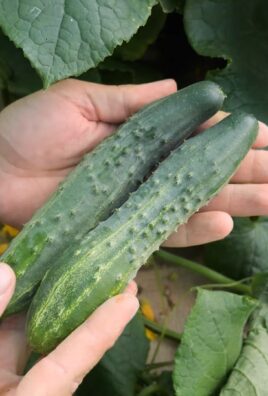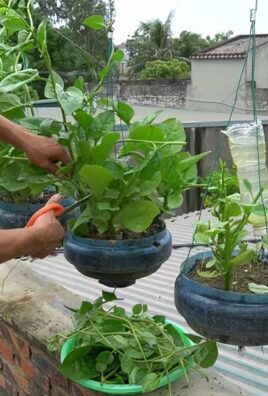Grow Passion Fruit at Home, even if you think you don’t have a green thumb! Have you ever dreamt of plucking a perfectly ripe, tangy-sweet passion fruit straight from your own vine? It sounds like a tropical fantasy, right? But trust me, it’s more achievable than you think! For centuries, passion fruit has been cherished in South America and Australia, not just for its delicious flavor, but also for its vibrant beauty and purported medicinal properties. Imagine adding that exotic touch to your garden!
I know what you’re thinking: “Passion fruit? That sounds complicated!” But that’s where this DIY guide comes in. We’re breaking down the process into simple, manageable steps, so you can successfully grow passion fruit at home, regardless of your gardening experience. Forget expensive store-bought fruit – imagine the satisfaction of harvesting your own! Plus, growing your own passion fruit is a fantastic way to add a unique and beautiful element to your garden, attracting pollinators and creating a lush, tropical vibe. So, are you ready to embark on this exciting gardening adventure with me? Let’s get started!

Passionsfrucht zu Hause anbauen: Dein DIY-Leitfaden für eine tropische Ernte
Hey Pflanzenfreunde! Habt ihr euch jemals gefragt, wie ihr diese köstlichen, exotischen Passionsfrüchte selbst anbauen könnt? Ich zeige euch, wie ihr das ganz einfach zu Hause schaffen könnt. Es ist gar nicht so schwer, wie man denkt, und das Ergebnis ist einfach unglaublich befriedigend. Lasst uns gemeinsam in die Welt der Passionsfrucht eintauchen!
Was du brauchst: Die richtige Vorbereitung
Bevor wir loslegen, brauchen wir natürlich das richtige Equipment und die passenden Materialien. Hier ist eine Liste, damit ihr alles griffbereit habt:
* Passionsfruchtsamen oder eine Jungpflanze: Samen sind günstiger, aber Jungpflanzen sparen Zeit. Ich empfehle, mit einer Jungpflanze zu beginnen, wenn ihr ungeduldig seid.
* Einen Topf oder Kübel: Mindestens 30 cm Durchmesser, damit die Wurzeln genug Platz haben.
* Hochwertige Blumenerde: Gut durchlässig und nährstoffreich ist wichtig.
* Rankhilfe: Ein Spalier, ein Zaun oder ein stabiler Stock, an dem die Pflanze hochklettern kann. Passionsfrüchte sind Kletterpflanzen, also brauchen sie Unterstützung.
* Gartenschere: Zum Beschneiden der Pflanze.
* Gießkanne oder Schlauch: Für die regelmäßige Bewässerung.
* Dünger: Ein ausgewogener Dünger für Fruchtpflanzen.
* Geduld: Passionsfrüchte brauchen Zeit, um zu wachsen und Früchte zu tragen.
Die Aussaat: Der Start in dein Passionsfrucht-Abenteuer
Wenn ihr euch für Samen entschieden habt, ist die Aussaat der erste Schritt. Keine Sorge, es ist einfacher als es klingt!
1. Samen vorbereiten: Weicht die Samen für 24 Stunden in warmem Wasser ein. Das hilft, die Keimung zu beschleunigen.
2. Aussaatgefäß vorbereiten: Füllt ein kleines Anzuchtgefäß mit Anzuchterde.
3. Samen aussäen: Legt die Samen etwa 1 cm tief in die Erde und bedeckt sie leicht.
4. Feuchtigkeit bewahren: Gießt die Erde vorsichtig an und haltet sie feucht, aber nicht nass. Am besten verwendet ihr eine Sprühflasche.
5. Warm und hell stellen: Stellt das Anzuchtgefäß an einen warmen und hellen Ort, aber nicht in die pralle Sonne. Eine Temperatur von 20-25°C ist ideal.
6. Geduld haben: Die Keimung kann einige Wochen dauern. Lasst euch nicht entmutigen, wenn nicht alle Samen aufgehen.
Das Einpflanzen: Der Umzug in ein größeres Zuhause
Sobald eure kleinen Passionsfrucht-Pflänzchen stark genug sind (etwa 10-15 cm hoch), ist es Zeit, sie in einen größeren Topf oder Kübel umzupflanzen.
1. Topf vorbereiten: Füllt den Topf mit Blumenerde. Lasst oben etwa 5 cm Platz.
2. Pflanze vorsichtig aus dem Anzuchtgefäß nehmen: Achtet darauf, die Wurzeln nicht zu beschädigen.
3. Pflanze einsetzen: Setzt die Pflanze in die Mitte des Topfes und füllt den restlichen Raum mit Erde auf.
4. Angießen: Gießt die Pflanze gründlich an.
5. Rankhilfe anbringen: Steckt die Rankhilfe in den Topf und leitet die ersten Triebe der Pflanze daran entlang.
Die Pflege: So bleibt deine Passionsfrucht glücklich
Die richtige Pflege ist entscheidend für eine reiche Ernte. Hier sind meine besten Tipps:
* Standort: Passionsfrüchte lieben die Sonne! Stellt sie an einen sonnigen und warmen Ort. Mindestens 6 Stunden Sonne pro Tag sind ideal.
* Bewässerung: Gießt regelmäßig, besonders während der Wachstums- und Blütezeit. Die Erde sollte immer leicht feucht sein, aber nicht nass. Vermeidet Staunässe.
* Düngung: Düngt die Pflanze regelmäßig mit einem ausgewogenen Dünger für Fruchtpflanzen. Befolgt die Anweisungen auf der Verpackung.
* Beschneiden: Beschneidet die Pflanze regelmäßig, um das Wachstum anzuregen und die Fruchtbildung zu fördern. Entfernt abgestorbene oder kranke Triebe.
* Überwinterung: Passionsfrüchte sind nicht winterhart. Wenn ihr in einer Region mit kalten Wintern lebt, müsst ihr die Pflanze ins Haus holen. Stellt sie an einen hellen und kühlen Ort (etwa 10-15°C) und gießt sie weniger.
Die Blüte: Ein wunderschönes Schauspiel
Die Blüte der Passionsfrucht ist ein echtes Highlight. Die Blüten sind wunderschön und duften herrlich.
* Bestäubung: Passionsfrüchte sind auf Bestäubung angewiesen, um Früchte zu bilden. In der Natur übernehmen Bienen und andere Insekten diese Aufgabe. Wenn ihr die Pflanze im Haus habt, müsst ihr möglicherweise selbst Hand anlegen. Verwendet einen kleinen Pinsel, um den Pollen von einer Blüte zur anderen zu übertragen.
* Geduld haben: Nicht alle Blüten werden zu Früchten. Seid geduldig und gebt der Pflanze Zeit.
Die Ernte: Der Lohn deiner Mühe
Nach der Blüte dauert es einige Wochen, bis die Früchte reif sind.
* Reife erkennen: Reife Passionsfrüchte haben eine dunkle Farbe (je nach Sorte lila, rot oder gelb) und fallen leicht von der Pflanze ab. Sie können auch leicht schrumpelig aussehen.
* Ernten: Pflückt die reifen Früchte vorsichtig von der Pflanze.
* Genießen: Schneidet die Früchte auf und löffelt das Fruchtfleisch aus. Es schmeckt pur, im Joghurt, im Müsli oder in Cocktails.
Häufige Probleme und Lösungen
Auch beim Anbau von Passionsfrüchten können Probleme auftreten. Hier sind einige der häufigsten Probleme und wie ihr sie lösen könnt:
* Gelbe Blätter: Können ein Zeichen für Nährstoffmangel, Überwässerung oder Schädlingsbefall sein. Überprüft die Bewässerung und düngt die Pflanze gegebenenfalls.
* Keine Blüten: Können ein Zeichen für zu wenig Sonne, zu wenig Dünger oder falsches Beschneiden sein. Stellt die Pflanze an einen sonnigeren Ort, düngt sie regelmäßig und beschneidet sie richtig.
* Schädlinge: Passionsfrüchte können von Blattläusen, Spinnmilben oder Wollläusen befallen werden. Bekämpft die Schädlinge mit natürlichen Mitteln oder einem geeigneten Insektizid.
Zusätzliche Tipps für eine erfolgreiche Ernte
* Wählt die richtige Sorte: Es gibt verschiedene Sorten von Passionsfrüchten. Informiert euch, welche Sorte für euer Klima am besten geeignet ist.
* Verwendet hochwertige Erde: Eine gute Erde ist die Grundlage für gesundes Wachstum.
* Achtet auf die Drainage: Staunässe kann zu Wurzelfäule führen. Sorgt für eine gute Drainage im Topf.
* Seid geduldig: Passionsfrüchte brauchen Zeit, um zu wachsen und Früchte zu tragen. Lasst euch nicht entmutigen, wenn es nicht sofort klappt.
Ich hoffe, dieser Leitfaden hilft euch dabei, eure eigenen Passionsfrüchte zu Hause anzubauen. Es ist ein lohnendes Projekt, das euch mit köstlichen und exotischen Früchten belohnt. Viel Spaß beim Gärtnern!

Conclusion
So, there you have it! Growing passion fruit at home isn’t just a whimsical dream; it’s an achievable reality with a little patience and the right approach. We’ve walked you through the essential steps, from selecting the perfect variety to nurturing your vine for a bountiful harvest. But why should you even bother embarking on this tropical adventure?
The answer is simple: the unparalleled flavor of homegrown passion fruit. Store-bought varieties often lack the intense aroma and complex sweetness that come from fruit ripened on the vine. Imagine the burst of tropical sunshine in every spoonful, the vibrant tang that elevates your desserts, cocktails, and even savory dishes. Plus, there’s the sheer satisfaction of nurturing a plant from a tiny seed or cutting to a thriving vine laden with exotic fruit. It’s a rewarding experience that connects you to nature and provides a sustainable source of deliciousness.
Beyond the flavor, growing your own passion fruit allows you to control the growing conditions, ensuring that your fruit is free from harmful pesticides and chemicals. You know exactly what goes into your food, giving you peace of mind and a healthier option for you and your family.
But the benefits don’t stop there. Passion fruit vines are also incredibly beautiful, adding a touch of tropical elegance to your garden or patio. Their intricate tendrils and vibrant flowers are a visual delight, attracting pollinators and creating a haven for beneficial insects.
Ready to take your passion fruit journey to the next level? Consider these variations:
* **Experiment with different varieties:** Explore the diverse world of passion fruit, from the classic purple to the golden yellow and even the giant granadilla. Each variety offers a unique flavor profile and growing characteristics.
* **Vertical gardening:** If you’re short on space, train your passion fruit vine to grow vertically on a trellis or fence. This not only maximizes space but also creates a stunning visual display.
* **Hydroponic passion fruit:** For the adventurous gardener, consider growing passion fruit hydroponically. This method allows for precise control over nutrients and water, potentially leading to faster growth and higher yields.
* Grafting for improved resilience: Grafting your desired passion fruit variety onto a more robust rootstock can improve its resistance to diseases and pests, especially in challenging climates.
Growing passion fruit at home is more than just a gardening project; it’s an investment in flavor, health, and beauty. It’s a chance to connect with nature, learn new skills, and enjoy the fruits (literally!) of your labor.
We encourage you to take the plunge and embark on this exciting adventure. Don’t be afraid to experiment, learn from your mistakes, and most importantly, have fun! And once you’ve tasted the sweet success of homegrown passion fruit, we’d love to hear about your experience. Share your tips, tricks, and photos with us in the comments below. Let’s create a community of passionate passion fruit growers!
Frequently Asked Questions (FAQ)
What is the best climate for growing passion fruit?
Passion fruit thrives in warm, subtropical to tropical climates. Ideally, temperatures should range between 65°F (18°C) and 85°F (29°C). While they can tolerate brief periods of cooler temperatures, frost can be damaging. In colder climates, consider growing passion fruit in containers that can be moved indoors during the winter months. The key is to provide them with plenty of sunlight and protection from harsh winds. Even in warmer climates, young plants benefit from some afternoon shade, especially during the hottest months. Remember to research the specific hardiness of the passion fruit variety you choose, as some are more cold-tolerant than others.
How long does it take for a passion fruit vine to produce fruit?
Patience is key! Generally, passion fruit vines grown from seed can take 1-2 years to produce fruit. However, vines grown from cuttings or grafted plants may fruit sooner, sometimes within 6-12 months. Several factors influence fruiting time, including the variety, growing conditions, and overall health of the plant. Ensure your vine receives adequate sunlight, water, and nutrients to encourage flowering and fruit production. Regular pruning can also help stimulate fruiting by promoting new growth. If your vine is not fruiting after a reasonable amount of time, consider testing the soil pH and nutrient levels to identify any deficiencies.
What kind of soil is best for passion fruit?
Passion fruit prefers well-draining soil that is rich in organic matter. A slightly acidic to neutral pH (around 6.0 to 7.0) is ideal. Amend heavy clay soils with compost, peat moss, or other organic materials to improve drainage and aeration. Sandy soils may require the addition of organic matter to improve water retention. Before planting, consider conducting a soil test to determine the pH and nutrient levels. This will help you identify any necessary amendments to create the optimal growing environment for your passion fruit vine. Regular applications of compost or other organic fertilizers can also help maintain soil health and fertility.
How often should I water my passion fruit vine?
Watering frequency depends on the climate, soil type, and stage of growth. Generally, passion fruit vines need consistent moisture, especially during flowering and fruit development. Water deeply whenever the top inch of soil feels dry to the touch. Avoid overwatering, as this can lead to root rot. During hot, dry weather, you may need to water more frequently. In cooler, wetter weather, reduce watering accordingly. Mulching around the base of the vine can help retain moisture and suppress weeds. Monitor your plant closely for signs of stress, such as wilting or yellowing leaves, which may indicate improper watering.
What are some common pests and diseases that affect passion fruit?
Passion fruit vines can be susceptible to various pests and diseases, including aphids, spider mites, scale insects, and fungal diseases like fusarium wilt and anthracnose. Regularly inspect your vine for signs of infestation or disease. Treat infestations with insecticidal soap or neem oil. Prevent fungal diseases by ensuring good air circulation and avoiding overhead watering. Prune away any infected leaves or stems to prevent the spread of disease. Choose disease-resistant varieties whenever possible. Maintaining a healthy and vigorous vine is the best defense against pests and diseases.
How do I prune my passion fruit vine?
Pruning is essential for maintaining a healthy and productive passion fruit vine. Prune regularly to remove dead, damaged, or diseased growth. Also, prune to control the size and shape of the vine and to encourage new growth, which is where the flowers and fruit will develop. The best time to prune is after the main fruiting season. Remove any tangled or overcrowded growth to improve air circulation and sunlight penetration. Avoid heavy pruning, as this can reduce fruit production. Focus on thinning out the vine rather than drastically shortening the stems.
Can I grow passion fruit in a container?
Yes, you can successfully grow passion fruit in a container, especially if you live in a climate with cold winters. Choose a large container (at least 20 gallons) with good drainage. Use a well-draining potting mix that is rich in organic matter. Provide a trellis or other support for the vine to climb. Water regularly and fertilize every few weeks during the growing season. Place the container in a sunny location that receives at least 6 hours of direct sunlight per day. In colder climates, move the container indoors during the winter months and provide supplemental lighting if necessary. Container-grown passion fruit may require more frequent watering and fertilization than those grown in the ground.
How do I know when passion fruit is ripe?
Passion fruit is ripe when it changes color from green to purple, yellow, or reddish-orange, depending on the variety. The fruit will also become slightly wrinkled and feel heavy for its size. Ripe passion fruit will often fall from the vine, but you can also gently tug on the fruit to see if it is ready to be harvested. The aroma of ripe passion fruit is also a good indicator of ripeness. The fruit should have a strong, sweet, and tropical fragrance. Once harvested, passion fruit can be stored at room temperature for a few days or in the refrigerator for up to a week.
What can I do with passion fruit?
Passion fruit is incredibly versatile and can be used in a variety of culinary applications. The pulp can be eaten fresh, used in juices, smoothies, cocktails, desserts, and sauces. Passion fruit adds a unique tropical flavor to cakes, pies, ice cream, and yogurt. It can also be used to make jams, jellies, and preserves. In savory dishes, passion fruit can be used to create marinades for meat and fish or as a topping for salads. The possibilities are endless! Experiment with different recipes and find your favorite ways to enjoy this delicious and exotic fruit.




Leave a Comment